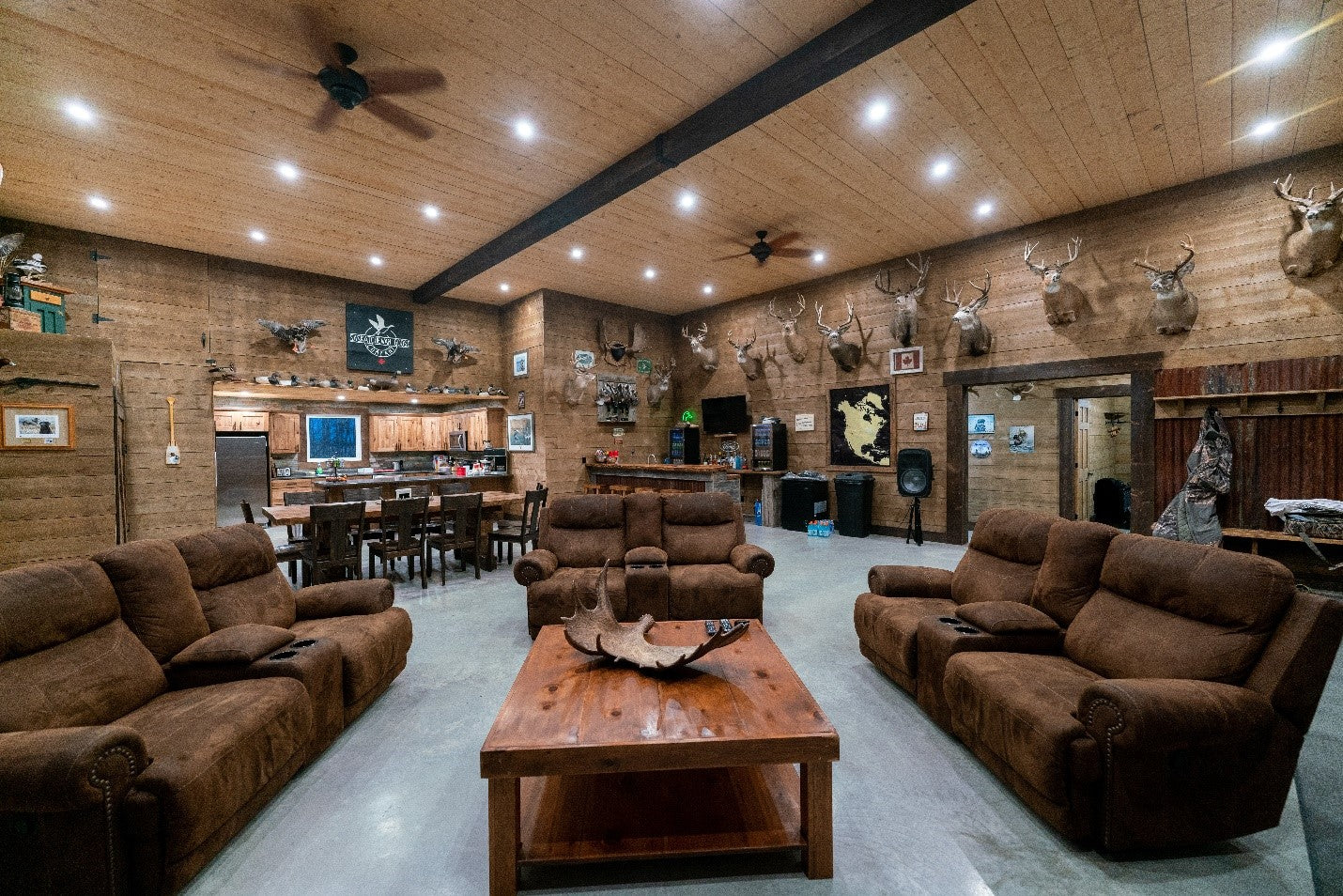
60 DAYS IN SASKATCHEWAN
60 DAYS IN SASKATCHEWAN by Mario Friendy
If you have never been to Canada to chase waterfowl or if you have never spent more than a week or so, their season changes quickly. The U.S. waterfowl seasons are long and at points drag on a little as we hit slow spurts but in Saskatchewan like most of the Northern Provinces each week there is equivalent to two weeks down here. It is like figuring out how old your dog is in 1 of our human year’s vs 7 in dog years. So much happens in 8 weeks that is almost like having 4 months of the migration down in the lower forty-eight. Seasons usually run September 1 until the end of October if the weather and birds don’t get pushed out by snow and frigid temperatures.
Let’s take Saskatchewan for instance, even more narrow let’s say Northern Saskatchewan with Saskatchewan Goose Company and Tyler Mann. They don’t have a claim to fame for holding the most Specks or having a stopover for the Snows where numbers are near a million but what they do have is VARIETY! The hunts usually stay the same as you target dark geese in the morning and ducks and if you don’t finish with limits in the morning, you head out in the afternoon to chase the rest of the limits. If there are snows or lots of ducks, they will mix it up and spend the morning chasing dark geese then the afternoons after snows or ducks. The one thing that stays steady at camp is the food! You get a big brunch after the morning hunt and big dinner after the evening hunt and most of the time you must be rolled to one of the reclining chairs in the lodge.
We talked with Tyler to get more in-depth look at timeline in his flyway. His lodge opens on September 1st and the first two weeks are mainly honkers with a few local ducks. The tactics they are using at the beginning is putting a small silhouette spread as the birds are not educated and are still in family groups. They run about 10 dozen of our FA Last Pass Silhouettes with our S.U.B. stand up blind and one or two of the Lucky Duck spinning wing decoys for the ducks. The first fields off by farmers are green fields or second cut alfalfa fields. This is also the beginning of the major harvest where there will be a few wheat or barley swathed fields to hunt with the Stand-Up Blinds. The spinning wing decoys with a remote for the ducks coming at first light is a must as you need to turn them off when the geese start to come. Canada or not, the geese still don’t like the spinners there or anywhere else. The honkers are a little lazier and later in the morning and the calling is easy and very laid back with lots of clucks and moans. No other birds are down at this time but there is a chance of some late migrating Sandhill Cranes which is a very tasty bonus.

Mid-September is when all the Arctic birds show up (thanks Brad Fenson for the term). Arctic birds are your Specks, Snows and Lesser Canadas. At this time in the season the migration goes into full push mode. This is when the Specks, Snows and Lessers start to get thick with some fresh ducks showing up as well. Tyler and his guides put out silhouette spreads, around 25-30 dozen and the Lucky Duck spinning wing decoys. The keys to this part of the season are simple…….be where the birds are! Scouting is the key. Another important part of the hunt is the hide. They put out the Stand-Up blinds with grass and willow tree branches to make it look like a clump or trees in the middle of the field. There are lots of those in the fields up there so the birds really don’t thing twice about them. The great part is the leaves are still on the branches for a little while longer so that helps your hide.

October is my favorite month and can be loaded with anything depending on the weather and migration. The majority this late will be Giant Honkers with lots of ducks. The lucky duck spinners are what is key in this part of the season. It not only gets the ducks attention but it also centers them up with the wind and where your blind is so you can get quality shots for all the guests. This is when Tyler hooks up the big boy trailer and puts out about 15 to 20 dozen of our FA HD Full Body Honker decoys. Whether it is decoys, calling or concealment this is show time and when all the tricks must be pulled out to make sure everyone has great hunts down to the last day of camp being open. The weather is getting worse, the patterns of the birds are somewhat predictable, but you still have to scout hard to find them to put your guys on the X. . More aggressive calling teamed with a lot of finesse and really reading the birds is also a key. The ducks at this time are in prime condition and absolutely everywhere. There is mostly Mallards and some Pintails and burning through your 8 bird limit sometimes seems like it goes by in a blink of an eye.
If you have never experienced North of the border do yourself a favor and take your family and friends and go experience it at least once. You will never forget the memories of the hunting, the folks you meet up there and the sunrises and sunsets.
It is magical.